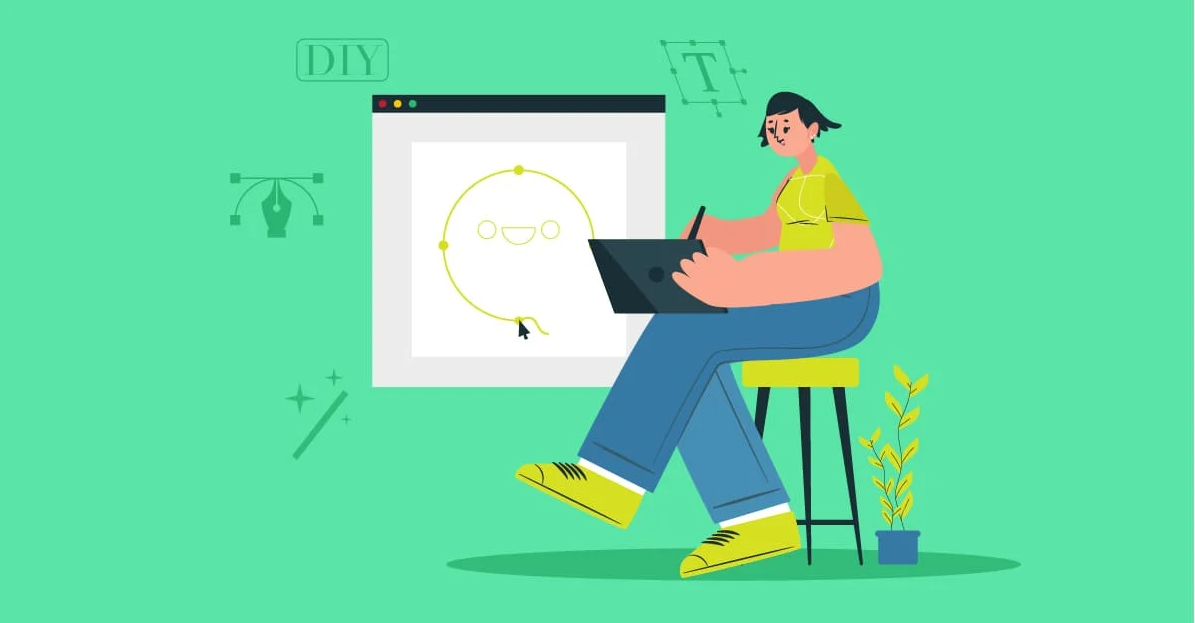In the evolving landscape of business branding, a logo is not just an image but a powerful emblem of a company’s identity. A well-crafted logo can echo the core values and essence of a business, making it instantly recognizable to the masses. Given the critical role logo design plays in business marketing and identity preservation, mastering the art of logo design services is indispensable for enhancing brand perception and engagement.
This blog aims to delve into the critical aspects necessary to excel in logo design services, covering fundamental principles through to strategic application in various business contexts. By the end of this post, you will become more adept at navigating this creatively demanding yet rewarding field.
Understanding Client Vision
The first step towards delivering outstanding Logo Designs Service hinges on deeply understanding your client’s vision. A comprehensive briefing is invaluable where specific questions about the brand’s history, values, target audience, and competitor landscape should be asked. This foundational knowledge provides the groundwork on which all creative decisions can be based, ensuring that each design aligns with the client’s expectations and business goals.
In addition to conversations with clients, practical tools like mood boards, color wheels, and typo-graphic alignment can help bridge the gap between client expectations and visual expression. It’s crucial for designers to integrate feedback loops early on to align visions effectively.

Mastering The Basics of Design Theory
To thrive in logo design, one must master the timeless principles of design theory—balance, proportion, hierarchy, typography, and color theory. Understanding these basics provides a framework that guides the creative process and ensures that a logo is not only visually appealing but also functionally effective. Knowledge in typography can especially make or break a logo’s effectiveness as it significantly influences readability and brand perception.
Experimentation within these realms allows a designer to discover unique combinations that can make a logo stand out while maintaining aesthetic coherence. Ongoing education in evolving design trends also ensures that one’s work remains relevant and resonant with modern audiences.
Creative Use of Technology and Tools
Incorporating advanced software and tools is essential for modern logo design. Vector graphic software like Adobe Illustrator or CorelDRAW is crucial because they allow scale manipulation without loss of resolution – critical for logos that must work on varied platforms from business cards to billboards. Experimentation with other techs like 3D modeling software or animation can add another unique touch.
Another vital aspect is staying updated with new technologies and digital formats which can offer fresh ideas for innovative logo designs. For example, understanding AR/VR capabilities might inspire immersive branding ideas that could be trendsetting in digital marketing circles.
Building a Comprehensive Portfolio
Showcasing your work effectively through a detailed portfolio helps attract potential clients by demonstrating your versatility across various styles and industries. Including case studies that narrate your creative process and how you align it with client goals could notably increase trust among prospects. It’s vital to ensure that each entry reflects technical expertise as well as narrative coherence showing the thought process behind each project.
Regular updates are crucial as it reflects ongoing commitment to skill enhancement and trend adaptability in portfolio presentations. Also consider diversifying your presentation platforms; besides traditional websites, leverage portfolio sites like Behance or Dribbble which are frequented by industry professionals.
Acknowledging Critiques and Feedback
Last but certainly not least, responding constructively to critiques and feedback plays a pivotal role in refining skills over time. Whether it’s from clients, peers or mentors, constructive criticism should be seen as an invaluable asset for professional growth rather than personal disparagement.
Active participation in design communities can offer fresh perspectives on one’s work which might otherwise go unnoticed in isolation. Engaging regularly with fellow designers allows you not only to gain from their experiences but also to provide constructive feedback, fostering a supportive creative environment.
In conclusion, mastering logo design requires more than just artistic skills—it demands an understanding of branding strategies backed by robust technical expertise and interpersonal communication prowess. By cultivating these multifaceted abilities, designers not only improve their craft but also significantly contribute to building comprehensive brand identities.
Becoming proficient in logo design services further entails continuous learning and adaptation; staying abreast of the latest trends while maintaining a firm grasp of foundational design principles forms a resilient platform upon which successful careers are built. Dive into this exciting journey with dedicated zeal, and witness your growth as you hone your skills across projects diverse in scope and creativity.

